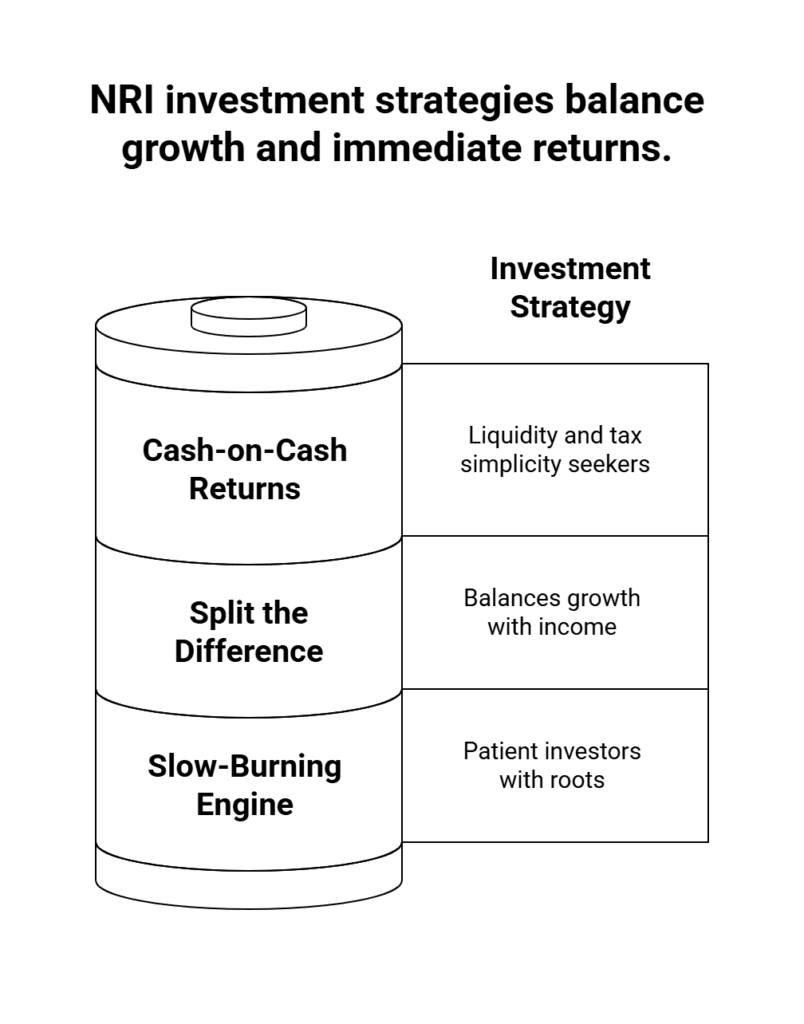It’s a crossroads decision every year: if you’re a Non-Resident Indian (NRI), where should your next real estate investment be, back home in India or in the glimmering cities of the UAE? By 2025, the stakes will have never been higher, and the options will never be so nuanced. NRIs are weighing not just bricks and mortar, but future returns, government policies, lifestyle dreams, and, yes, the ever-shifting hands of global finance.
Funny thing is, the answer keeps changing. India, with its rapid economic surge and regulatory upgrades, has morphed into a sophisticated investment arena. Meanwhile, the UAE, and Dubai in particular, lures with the promise of tax-free returns and glitzy urban living. So what’s driving NRIs’ choices this year? Let’s dive into the facts, the trends, and the must-knows that will shape your next move.
The Big Picture: Real Estate for NRIs in 2025
Here’s what 2025 looks like: Indian expats, especially in the Gulf, are split. Some are snapping up gleaming apartments in the UAE for instant cash flow and lifestyle perks. Others are sending money back to Indian cities, hoping for long-term capital gains, roots, or a place for the kids to grow up.
Why this tug-of-war? Several reasons pop up:
- Market conditions in both India and the UAE have shifted post-pandemic.
- Government policy tweaks, think Dubai’s visa rules or India’s stricter regulatory environment, alter investment math overnight.
- Rapid changes in interest rates, currency trends, and rental yields keep things fluid.
- Emotional attachments can’t be ignored: owning a home “back home” means more than just money.
Let’s break down both markets and see where the chips really fall.
UAE Property Market: Yields, Rules, Realities
Just picture it: Palm-lined boulevards, tax-free rental income, and the sparkle of skyscraper living. But these aren’t just Instagram moments. For NRIs, the UAE market (with Dubai at the center) is all about:
- Strong rental yields (typically 5–7% per year)
- Zero income tax on rental income, zero capital gains tax
- Stable currency linked to the US dollar, reducing risk
- Straightforward property ownership, especially in designated freehold zones
Take an example straight from 2025’s listings: A mid-tier apartment in Dubai’s Jumeirah Lake Towers (JLT) costing ₹1.5 crore can bring in ₹8–10 lakh per year, with no local tax bill.
Policy Perks, New Pitfalls
For years, NRIs flocked to Dubai for the “Golden Visa,” which came bundled with property investments. Now, a key shift: changes to those visa rules have cooled short-term speculative buying. The market’s focus is sliding back toward fundamentals, quality properties, stable tenants, and real, long-term cash flow. Flip culture is out; holding for value is in.
Yet, the appeal stays strong. Top Dubai neighborhoods like Palm Jumeirah, Downtown Dubai, Dubai Hills, and the Marina remain safe havens for high-net-worth investors who want both a luxury lifestyle and robust asset security.
Not Just for the Rich
Middle-income buyers aren’t left out either; lower entry prices compared to London or Singapore make Dubai tempting for a wide band of NRI investors. Plus, the government keeps pushing innovative projects, tourism, and new tech-driven neighborhoods.
Risks and Realities
Let’s not sugarcoat it: Property values can be volatile. The market dances to oil prices, geopolitical winds, and policy pivots. Loose lending standards? In the past, they’ve led to sharp corrections, though regulation is tighter now. And while there is no local tax, don’t forget: you may face tax in India or via other rules at home.
India’s Evolving Real Estate Landscape
India, meanwhile, isn’t the “Wild West” it once was for property deals. Quite the opposite. By 2025:
- The Indian real estate sector has surged past $650 billion in value, with forecasts hitting even higher.
- Regulatory changes (see: RERA) and smarter digital platforms make buying, selling, and managing property easier and far more transparent.
- Major cities: Mumbai, Bangalore, Hyderabad, Pune, Chennai, Gurugram, and more are bustling with large-scale, world-class developments, from green townships to high-tech apartments.
- Price growth moderates after years of frenzy, while metro markets posted 5% gains in early 2025, some segments have slowed, cooling entry for new buyers.
Why NRIs Still Flock Back
It’s a familiar story:
- Emotional security: Many NRIs want a base in India, for family, for a sense of belonging, or as a hedge against global upheaval.
- Capital appreciation: Especially in the big cities, property values have consistently marched higher, think 5–8% a year in Tier-1 markets.
- Indian rupee’s depreciation: Makes buying more attractive for dollar (or dirham) earners, the same rupees now buy more property.
- India’s economy: Rapid growth means cities aren’t just getting bigger; they’re getting richer, with better amenities and infrastructure.
Legal and Practical Considerations
The rules are fairly NRI-friendly:
- You can buy as many residential and commercial properties as you wish (except agricultural land or plantations), under FEMA and RBI guidelines.
- Digitization now means virtual tours, e-signing, and title checks are all feasible from abroad, no more chasing paper trails.
- New trends, fractional ownership (where you own part of a property), co-living, serviced apartments, and green buildings, have taken off, making for a more diverse investment landscape.
The Numbers That Matter
- Rental yields: Typically 2–4% in most metros, so less monthly cash flow than the UAE, but with lower risk.
- Capital gains: 5–8% per year in leading cities, sometimes higher in emerging areas.
- Entry costs: India offers a much broader range; there’s a property for every budget, from a few lakhs for fractional office space to crores for luxury penthouses.
Key Differences: Returns, Risk, and Regulations
Here’s the kicker: if you stack the UAE and India side by side, the contrasts jump out.
| Investment Factor | UAE (Dubai) | India |
| Rental Yields | 5–7% | 2–4% |
| Capital Growth | 4–8% | 5–8% |
| Tax on Rental Income | 0% | As per the income tax slab |
| Capital Gains Tax | 0% | 20% (long-term) |
| Liquidity | High (prime areas) | Varies by city |
| Entry Cost | Mid-high (global) | Low-mid-high (flexible) |
| Regulatory Risk | Low (clear rules) | Declining (post-RERA) |
Notes:
- Taxation: Rental and capital gains income from property in India is always taxable under Indian law for NRIs. UAE rentals face no local tax, but check your country of residence for potential global tax reporting.
- Visa Rules: Golden Visa options in Dubai were a factor, but are now less pivotal; quality now trumps residency perks.
- Currency Risk: The UAE Dirham is pegged to the US dollar, making it relatively stable; the Indian rupee can fluctuate, which is an opportunity (and a risk) for dollar/dirham earners.
Taxation and Money Matters: How Each Country Stacks Up
In the UAE:
- No local income tax on rental income.
- No capital gains tax, what you make, you keep (in the UAE).
- But: Indian tax law may tax this income if you remit it back or meet certain residency rules.
In India:
- Rental income: Taxed according to your income slab, NRIs must file returns even if income is received outside India.
- Capital gains tax: Generally, 20% for long-term gains if you hold for more than 2 years. Short-term gains are taxed as per the slab.
- Double Tax Avoidance Agreement (DTAA): There’s an active India–UAE treaty to avoid double taxation and mitigate tax liability. But the devil’s in the details. Work with a qualified tax advisor to stay compliant.
Other Fees to Keep in Mind
- Registration charges, stamp duties, and GST (in India).
- Service charges, maintenance fees, and community charges (in the UAE).
- Mortgage rates: around 5% in Dubai, versus 9–10% or more in India, materially affecting your cash flow.
Trends Shaping NRI Choices This Year
It’s not just about “where yields are highest.” Several new patterns have emerged:
Shift from Short-term Speculation to Long-term Value
Short-term “flip” investors are exiting, especially in Dubai, as rule changes close off quick residency-visa options. Both markets see a turn toward holding quality, rent-generating assets.
Luxury and Ultra-Luxury Segment Booms
High-net-worth individuals (HNIs) and NRIs are the primary buyers of top-tier homes and villas, Palm Jumeirah in Dubai, or South Mumbai and Gurgaon in India, with the segment growing by 85% year-on-year in India in early 2025.
Capital Repatriation from the UAE to India
Believe it or not, a recent market study found a 22% year-on-year surge in NRI investment flow back into India, much of it from NRIs who previously preferred UAE real estate.
Digital Disruption Makes Distant Investing Simple
Fractional ownership, blockchain-enabled transactions, AI-guided property tours: More NRIs now buy, manage, and even sell their Indian or UAE properties entirely online.
Focus on Secondary Cities and Commercial Assets
In India, NRIs are increasingly targeting “next-tier” cities, think Kochi, Ahmedabad, Chandigarh, and alternative assets like office parks, senior living units, and rental apartments, often for higher yields and lower entry costs.
Exchange Rate Winds Add Appeal to Indian Buys
A weaker rupee against the dollar or dirham dramatically increases NRIs’ purchasing power in India. That means, for many, now is the golden window to buy “back home.”
Frequently Asked Questions
Can I buy property in both countries as an NRI?
Absolutely. Most NRIs diversify by keeping investments in both India and the UAE, balancing short-term rental yields with long-term capital appreciation.
What documents do NRIs need to invest?
- Valid passport and visa
- PAN card (mandatory for India)
- Overseas address proof
- NRE/NRO/FCNR bank account (for Indian property payments)
- Power of Attorney (helpful for managing the process remotely)
Are there restrictions on what NRIs can buy?
- India: No limit on the number of properties; no agricultural land or farmhouses without special permissions.
- UAE: Full ownership in freehold areas; restrictions in some zones.
How do financing options differ?
Dubai’s mortgages hover around 5% annually. In India, expect 9–10% interest rates, though major banks occasionally slash rates or offer limited-time discounts.
Final Thoughts: Mapping Your Ideal Investment

So, where do NRIs stand in 2025? The truth: there’s no one-size-fits-all. India’s market is a slow-burning engine, perfect for buyers with patience and roots. The UAE, especially Dubai, offers cash-on-cash returns fast, but is best for those who want liquidity and tax simplicity.
Most seasoned investors split the difference, combining India’s powerful growth story with Dubai’s income-generating stability. Might as well get the best of both worlds.
But, here’s the kicker: never invest blindly. Laws, regulations, and markets will continue to shift. The trick is to stay informed, consult trustworthy advisors familiar with NRI rules in both destinations, and keep your personal goals at the center of it all.
And if you’re still torn between a buzzing Mumbai high-rise and a sun-dappled Dubai marina tower… who says you have to pick just one? Sometimes, being an NRI means having both.
This in-depth NRI property investment guide for 2025 draws from recent market data, verified financial studies, and the latest news reports on real estate trends in India and the UAE. All information is up-to-date as of August 6, 2025, and will help you make your decision with confidence and clarity.






















